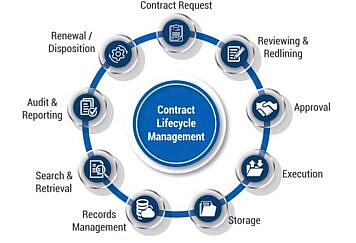For businesses not already implementing identity and access management, 2022 will be the year they likely have to do so, particularly with remote work and the growing cyber threat landscape.
Identity and access management or IAM is what’s going to ensure that your people have access to all the resources they need to get their jobs done and make sure at the same time that those assets and resources are secure.
For an IT department, user access control is one of the most critical responsibilities. This responsibility becomes complex because it has to be balanced with security, productivity, and efficiency. Your goal is to give users simplified access to IT resources but without compromising security in doing so. An easy way to do this is to audit user rights to internal systems so you can easily and efficiently practice role-based access control.
The following explains what identity and access management are separately and together and the current business implications.
A Basic Overview
Gartner describes IAM as a security discipline ensuring the right individuals have the required access to the right resources at the right time, specifying they need this access for the right reasons.
Authorized individuals and only those users should have access to certain resources.
IAM is broad and encompasses the technology you use to manage access and policies. The technology and policies guide identification, authorization, and authentication to people, groups of people, and software applications.
When you have in place an identity management system, it prevents unauthorized access to your resources and systems, preventing exfiltration. IAM should also flag attempted access by unauthorized programs or users, whether these occur from within or outside the perimeter.
Identity management is sometimes used interchangeably with identity and access management, but it’s only part of it in reality.
The broad term of IAM covers not only who’s accessing resources but also what resources they’re accessing. Identity management, by distinction, is about who’s accessing the resources rather than what they’re accessing.
Why Is IAM Important?
IAM streamlines the systems and processes for IT admins to assign digital identities to an entity, authenticate them with the login, and authorize them to access certain resources. It also facilitates monitoring and management of resources throughout the lifecycle.
IAM stands between users and the assets that are critical to them, so it’s an important layer of protection against compromised credentials and stolen passwords that are among the most frequent entry points for hackers who want to steal data or use ransomware.
When you do IAM well, it gives you frictionless functioning of your digital systems and helps promote productivity.
Your employees can work easily from anywhere, but you still have centralized visibility and management to ensure they only access what they need to do their jobs.
IAM isn’t only for employees either. Organizations are increasingly finding they need to provide secure access for business partners, contractors, and remote and mobile users and clients.
Due to digital transformation, identities are being assigned to devices that make up the Internet of Things, pieces of code like APIs, and robots. The hybrid multi-cloud environment further complicates things and necessitates IAM solutions that keep pace with the world we’re in.
To put it even more succinctly, you need IAM for a combination of security and productivity.
Passwords are often the primary point of failure in traditional security. If you have a user whose password is breached, your organization is entirely vulnerable to attack. With IAM, you reduce the point of failure and put in place tools to catch mistakes before the damage goes further.
As far as productivity, once your employees log into your primary IAM portal, they don’t have to worry about passwords or access levels. Every employee has tailored access to what they need to do their job, which makes things easier for them and reduces the workload on IT teams.
What Are the Components of IAM?
Some of the elements and components of IAM include:
- Users: A IAM user is an identity linked to a credential and the permissions associated with that credential. This might be a person, but a user can also be an application. With IAM, you can create user names for each employee in an organization. Each IAM user may be associated with only one account, and a newly created user wouldn’t be authorized to perform any actions.
- Groups: A collection of users is a group, and you can use these groups to apply permissions to multiple users.
- Policies: The policies underlying IAM set the permission and control access to resources. Policies define who can access what and the actions they can take.
- Roles: The role is a set of permissions that define the allowed actions and the denied actions by an entity.
Features of IAM include:
- Shared access to an account with separate usernames and passwords
- Granular levels of permission
- Multi-factor authentication—this is supported by IAM. With MFA, users provide their username and password plus another element such as a one-time password generated on their phone as an additional factor for authentication.
Comparing Identity Management and Access Management
We briefly touched on this above, but when exploring and explaining IAM, it’s important to distinguish between identity management and access management since they’re grouped together.
A digital identity contains the attributes and information defining a role. Identity management is a means of tracking and managing all the changes to the attributes and entities that might define an identity centrally. These changes can usually only be made by a few people within an organization.
Access management is the authentication of these identities once they’re created. Access management occurs as an identity asks for access to a certain resource, and then decisions are made as to whether or not that access is granted.
Sometimes access management is tiered.
Finally, authentication isn’t the same as authorization. A user might be authorized to be on a corporate network, but that doesn’t mean the identity automatically can access anything throughout the enterprise. The identity attributes determine whether authorization is granted to specific assets or applications.
Follow TechStrange for more Technology, Business, and Digital Marketing News.





